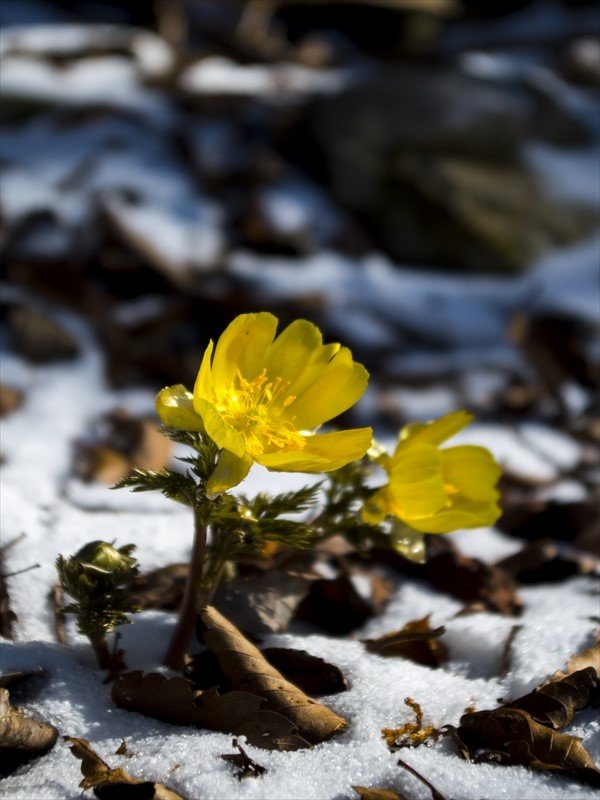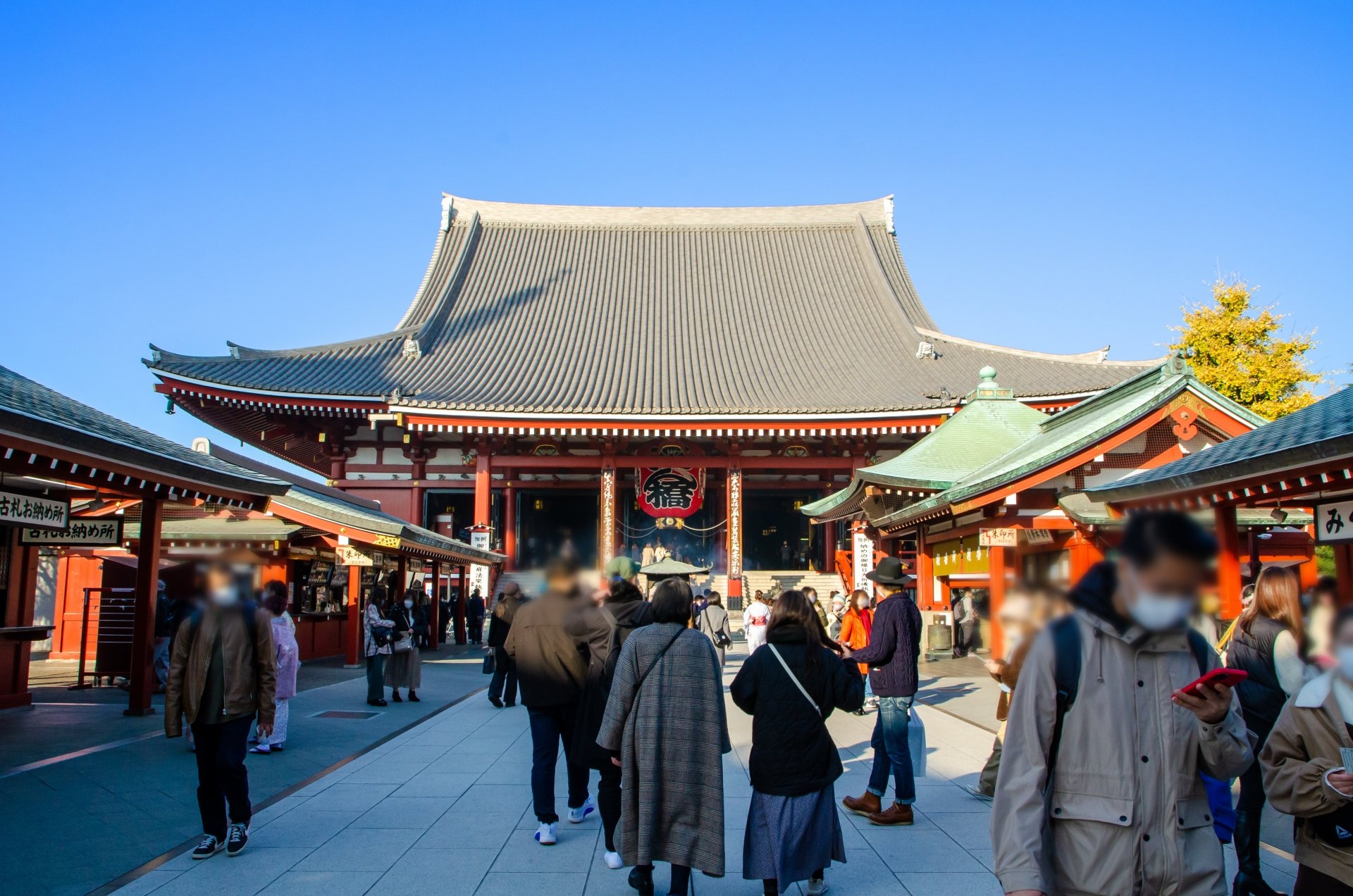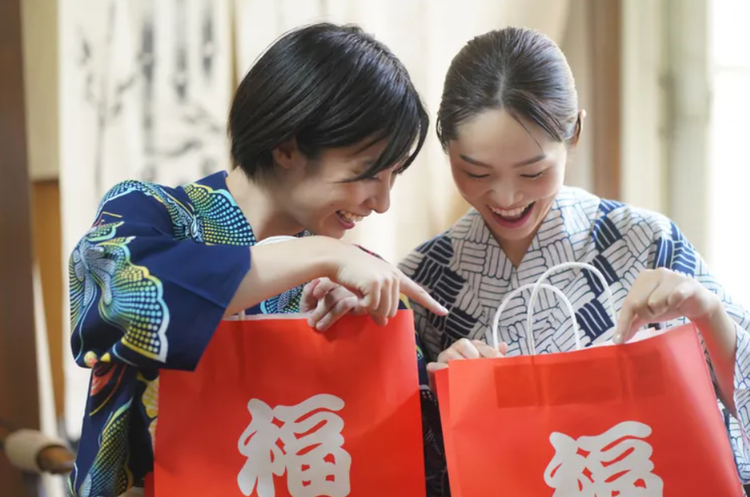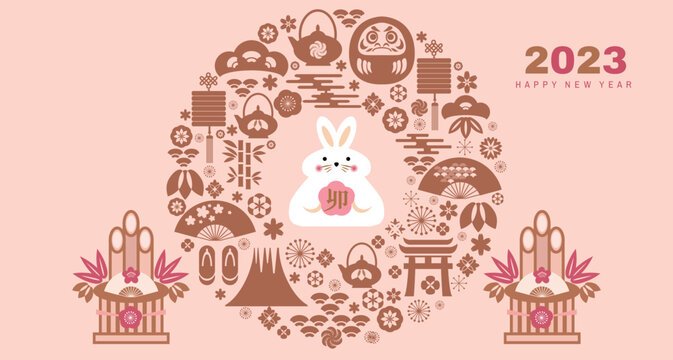Happy New Year from the OJAC!
Each new year is celebrated with traditions that symbolize hope for health, new beginnings, and good fortune. In our corner of Texas, those Western traditions might include eating black eyed peas for each day of the year, cabbage and cornbread for wealth, or staying up till midnight to shoot off fireworks or watch the ball drop on tv. What are some of your family's traditions?
In honor of the Season, I thought I would share a work from our permanent collection that reflects a unique reference to the New Year and cultural symbols of its celebration.
First a bit about its artist. Keisai Eisen, who was actually born with the name Ikeda Eisen, was raised at the turn of the 19th century in Edo Japan– which is now modern day Tokyo. The son of a noted calligrapher, Ikeda worked as an apprentice to notable painters and ukiyo-e printmakers- such as Kanō Hakkeisai, Kikugawa Eiji and Kikugawa Eizan. He was very influenced by these teachers, and actually took parts of their names to create a new name or pseudonym for himself as an artist. (He would be known as Keisai Eisen for the remainder of his career. )
It actually didn’t take long for Eisen to become a well-known artist himself. He created works in a variety of popular themes such as landscapes, folktales and surimono (which were commissioned works with personalized, poetic messages of blessings and good luck-wishes). These surimono prints were commonly made for the new year or other important milestones and celebrations.
But by far the genre and works for which he became most recognized were his “bijin-ga” woodcuts. Bijin-ga are prints of beautiful women. Most bijin-ga are portraits and full-length studies depicting the beautiful fashion of the Edo era, as well as everyday scenes of courtesans and geisha.
The OJAC collection work on the right is titled “Woman Wearing Kimono with Fukujuso Flower Pattern.” This Elsen bijin-ga print depicts a young woman wearing a blue kimono looking at plants. Her blue kimono- blue often being associated with luck- has a pattern of butterflies and what are called “Fukujuso” flowers.
The flower pattern on her kimono is what connects this piece to the New Year!
The Fukujuso flower is a golden yellow flower that grows in many mountainous areas of Japan. The flower blooms during the New Year of the traditional lunar calendar.
The name Fukujuso means “plant of good fortune and long life”, and despite actually being a poisonous flower to consume, it became a symbol of the New Year bringing good fortune, long life, blessing, luck and wealth.
Back in the Edo period, it was sold in small pots to sell for the new year! It’s been used for hundreds of years as special decoration for new years celebrations.
The exploration of New Year Symbolism in this piece led me to discover a few other Japanese traditions. Are you familiar with any of those listed below?
Hatsumode: This is the first shrine visit of the new year. People and Families visit a shrine at the beginning of January to pay respects and receive a fortune for the year ahead.
Ffukubukuro: These are fun, surprise bags that are sold by many retailers during the New Year season. They are purchased without knowledge of their contents, but are highly desirable as the collective retail value of the items inside are usually worth far more than the purchase price of the bag! Many people wait in long lines for these bags, which typically sell-out very quickly.
Nengajo: New Years Cards/Postcards that are sent to friends, family, and co-workers. (Much like the western tradition of Christmas Cards). These postcards are usually sent between January 1st- 3rd, and are beautifully printed with elaborate designs. Some are handmade or decorated with family photos from important events (such as a vacation, graduation or wedding) that took place the previous year. The most popular Nangajo design each year typically reflect that years Chinese Zodiac Animal. (Which means many Nengajo sent this month feature a rabbit motif!)





Kellie Bellah
Visitor Services Associate
Woman wearing Kimono with Fukujuso flower pattern, 19th century. KEISAI EISEN. Polychrome woodblock print on paper. 2003.021


